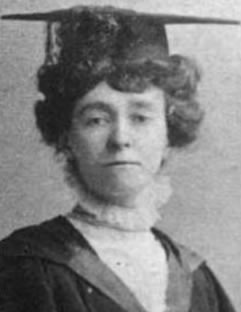
 At one time or another, many of us have had a friend like Emily Wilding Davison (1872—1913), labeled in her bio as a “militant suffragette.” A friend who is unafraid of consequences, that will do the unthinkable while we look on from the sidelines shaking our heads, but silently cheering them on. It could have been the fact that Davison was denied admission to Oxford because she was a woman that set her on the path of destruction, but more likely it went deeper. Because when she joined the the Pankhurst’s militant Women’s Social and Political Union (WSPU) she clearly jumped in with both feet.
At one time or another, many of us have had a friend like Emily Wilding Davison (1872—1913), labeled in her bio as a “militant suffragette.” A friend who is unafraid of consequences, that will do the unthinkable while we look on from the sidelines shaking our heads, but silently cheering them on. It could have been the fact that Davison was denied admission to Oxford because she was a woman that set her on the path of destruction, but more likely it went deeper. Because when she joined the the Pankhurst’s militant Women’s Social and Political Union (WSPU) she clearly jumped in with both feet.
Arrested many times, she was charged with violently attacking a man she thought to be Chancellor of the Exchequer, David Lloyd George (he wasn’t). George had voted against a measure that would have given women the right to vote in Britain (1910), but he felt women would favor the opposition party. In 1913, she was believed to have been involved (with the Pankhursts) in burning down a home being built for Lloyd George.
Davison was a ardent supporter in all WSPU activities, going on a hunger strike in Strangeways Prison and throwing herself down an iron staircase as a protest in Holloway prison landing 30 feet below on wire netting and suffering severe injuries.
On April 2, the night of the 1911 census, Davison hid in a cupboard in the Palace of Westminster overnight so that she could honestly give her place of residence that night as the “House of Commons.”
Sadly, as with most friends like Davison, her blind enthusiasm for a worthy cause led to her untimely death. Today, she is considered a martyr in her native Britain. See the video below of what happened the day she died.
